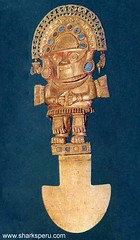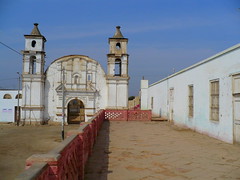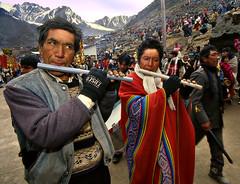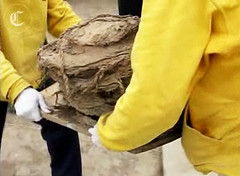The Tumi
The Tumi is a ceremonial knife used by ancient Peruvian cultures as a means to perform sacrifices. It consists of two parts, a semi-circular blade and a handle often representing the northern Peruvian God Naymlap. The ceremonial knife is usually made from solid gold, though sometimes bronze or copper, these metals representing the sun, from which Andean cultures believed all human life descended.
 Until November 1996, all tumis examined by archaeologists were recovered from grave robbers. This changed when in the Pomac forest 22 Sicán tombs were discovered, one containing a golden tumi. This allowed them to study the tumi in its natural setting.
Until November 1996, all tumis examined by archaeologists were recovered from grave robbers. This changed when in the Pomac forest 22 Sicán tombs were discovered, one containing a golden tumi. This allowed them to study the tumi in its natural setting.
In Moche art, tumis can be seen in use. Images show the killing and beheading of enemy soldiers as sacrifice. However, tumis were also used to heal – being used in medical operations, specifically in trepanation.
The Incas also performed human sacrifice but did so without using the tumi. Tumis were instead used for the sacrifice of llamas, such as in the festival if Inti Raymi
These days the tumi is nothing more than a cultural icon turned good luck symbol that people often hang on their walls. They are also available in shops selling artesania and tourist trinkets.
Tags: art, incas, moche, naymlap, sican, superstitions, tumi










